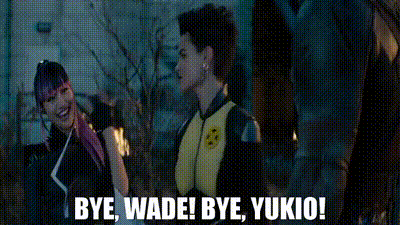Deadpool 1 and 2
Superhero stuff.
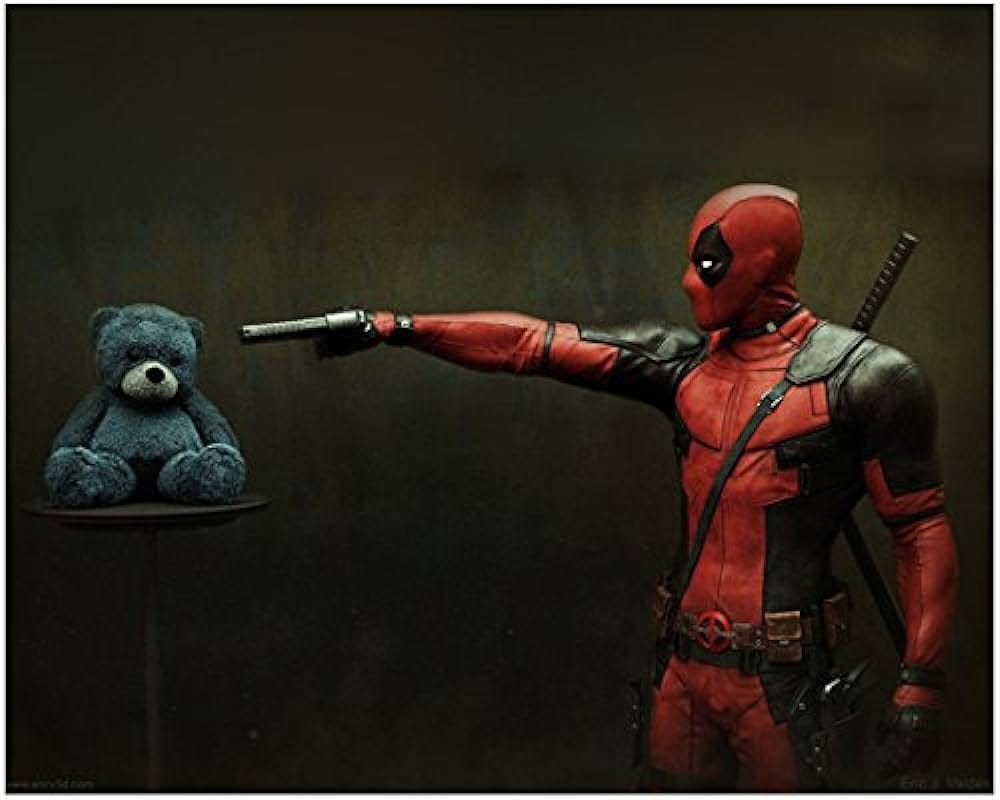
Created by artist/writer Rob Liefeld and writer Fabian Nicieza, Deadpool first appeared in 1991, in issue #98 of The New Mutants, which was a comic book about the younger kids attending Professor Xavier’s School for Gifted Youngsters, and the problems that came not only with growing up, but with growing up as a mutant too. This was a book that was also well on its way to being revamped into X-Force, which was a comic book about the younger kids attending Professor Xavier’s School for Gifted Youngsters, and the problems that came not only with growing up, but with growing up as a mutant too, AFTER a time-traveling super-soldier from a dark future radicalized them, molding them into a mutant terrorist cell, all so they could aid him in his war to change the past and thus, save the future.
Deadpool was a part of all this.
According to Nicieza, Liefeld was responsbile for the character's visual design and name, while he came up with the character's speech mannerisms. This sounds right as Liefeld is an artist and Nicieza is a writer. That said, regardless of how much or how little Fabian Nicieza may or may not have contributed to the character’s creation, it’s pretty clear to anyone familiar with his work that Deadpool is Rob Liefeld’s baby.
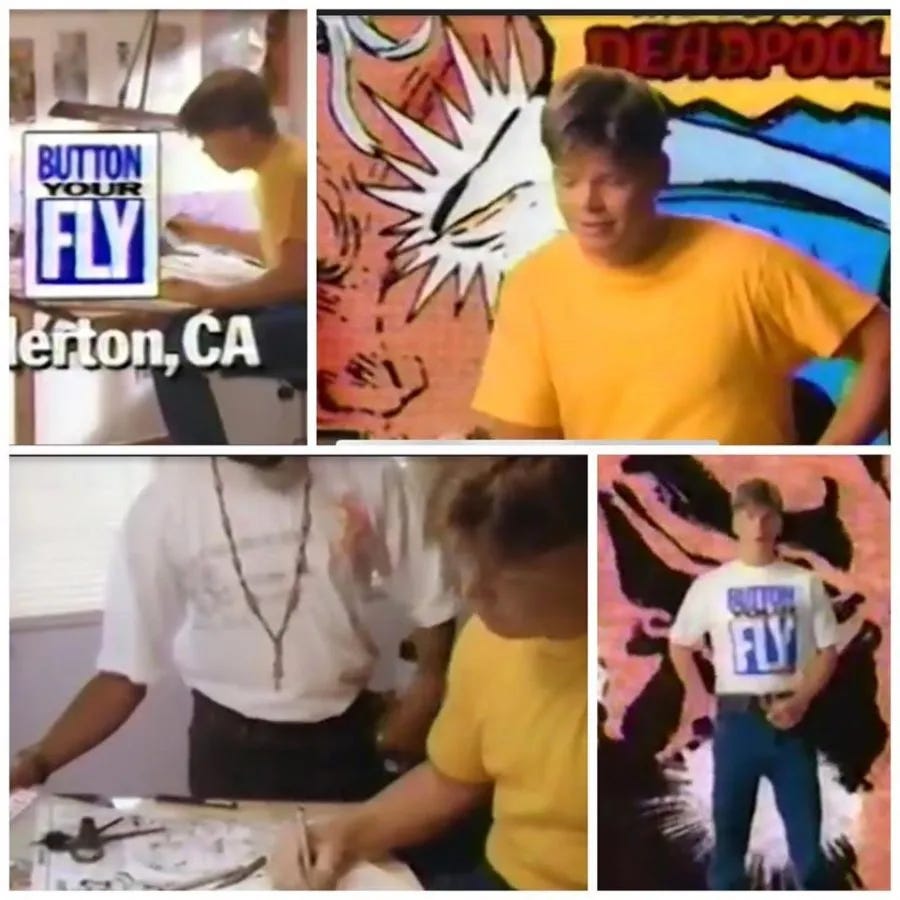
Rob Liefeld is probably most famous for winning a contest from Levi's Jeans in the early 90s to "pitch your job that you do in your 501s" and as a result, he was featured in a Levi’s 501 jeans commercial where director Spike Lee had to use all his directorial prowess just to get this comic book nerd to believably deliver his lines.
Also, the wardrobe ladies on set apparently made fun of his flat ass.
One year later, along with Erik Larsen, Jim Lee, Todd McFarlane, Whilce Portacio, Marc Silvestri, and Jim Valentino, Rob Liefeld founded the publishing house known as Image Comics. Every one of them a big name in comics at the time, the “Big Seven” famously broke from Marvel Comics over the issue of Creator’s Rights.
Despite the fact every single one of them immediately began publishing rip-off versions of their favorite Marvel and DC characters, the Image Comics publishing umbrella went on to great success. Rob holds the distinction of publishing the very first Image comic, Youngblood #1 in April, 1992, an Avengers riff about a celebrity super-team filled with big egos and personality clashes. Pre-orders for the book reached 930,000 copies, beating the previous records for top selling creator-owned comics, and top selling independent comics. Image went on to revolutionize the industry, not just on the issue of Creator’s Rights, but also in how it set new standards when it came to things like coloring, lettering, effects, and even paper quality too.
However, since Deadpool was a Marvel character, Liefeld had to leave him behind. Despite this, he is still completely entangled with the character to this day.
Because above all else, as an artist with no formal training to speak of, Liefeld is a uniquely terrible one, but also a very distinctive one. Once his mark is on a character, then it is there forever. He is well known for having a near legendary lack of skill for someone so popular in the field, particularly when it comes to drawing feet, which is why most of his characters’ feet are often hidden.
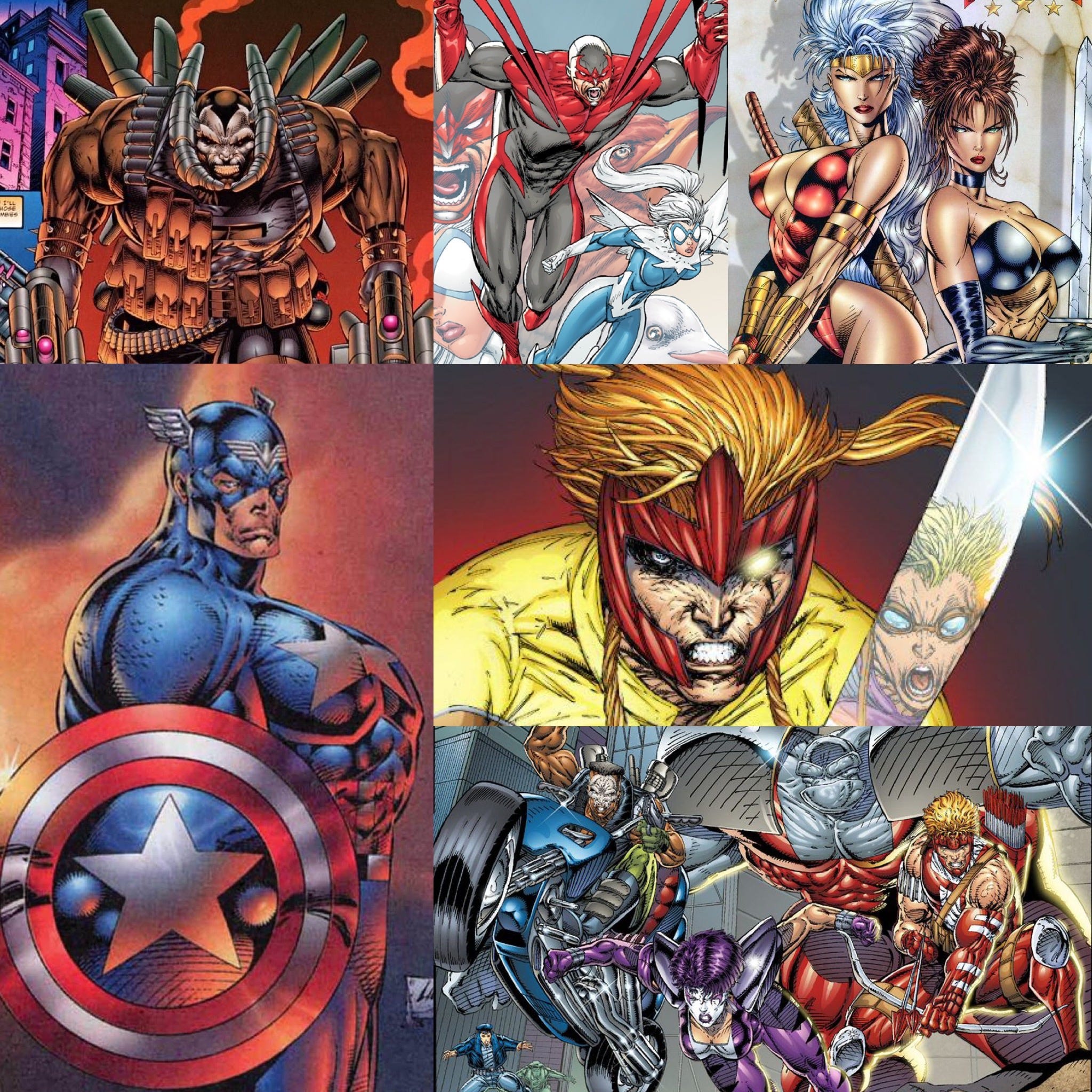
I’ve never understood why people liked his work.
But all that aside, as I was saying, it’s clear that Rob Liefeld is pretty much wholly responsible for creating Deadpool, just like it is also clear that, just like all the other Image Founders, when he created Deadpool, he borrowed from a wide variety of more well-known characters.
This is most obvious in how he combined Spider-man’s mask with the beloved DC Comics villain Deathstroke, real name Slade Wilson. In fact, the Deadpool designs so obviously pulled from Deathstroke that, upon seeing them for the first time, Fabian Nicieza apparently decided to just lean into it by making Deadpool’s real name be Wade Wilson.
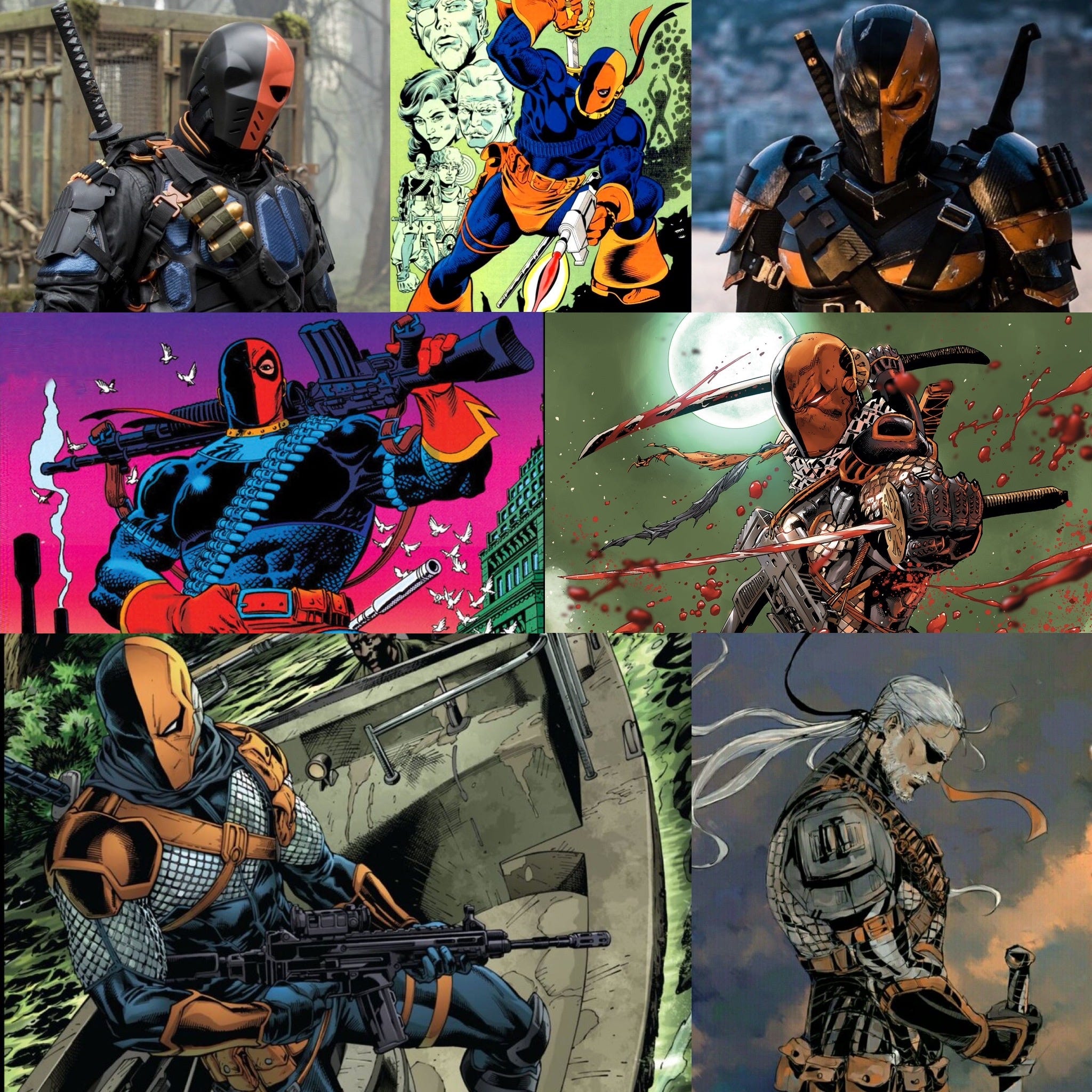
According to Liefeld, he was also inspired by Spider-man’s wise-cracking, by Wolverine’s hack and slash attitude and, due to his healing factor, the way he can take a lot of punishment, and also by the ninja swords and guns style of everyone’s favorite G.I. Joe ninja commando… Snake-eyes. In a nutshell, Deadpool was intended to be a bad-ass jackass, basically “Spider-Man, except with guns and swords.”
And thus, Deadpool was born.
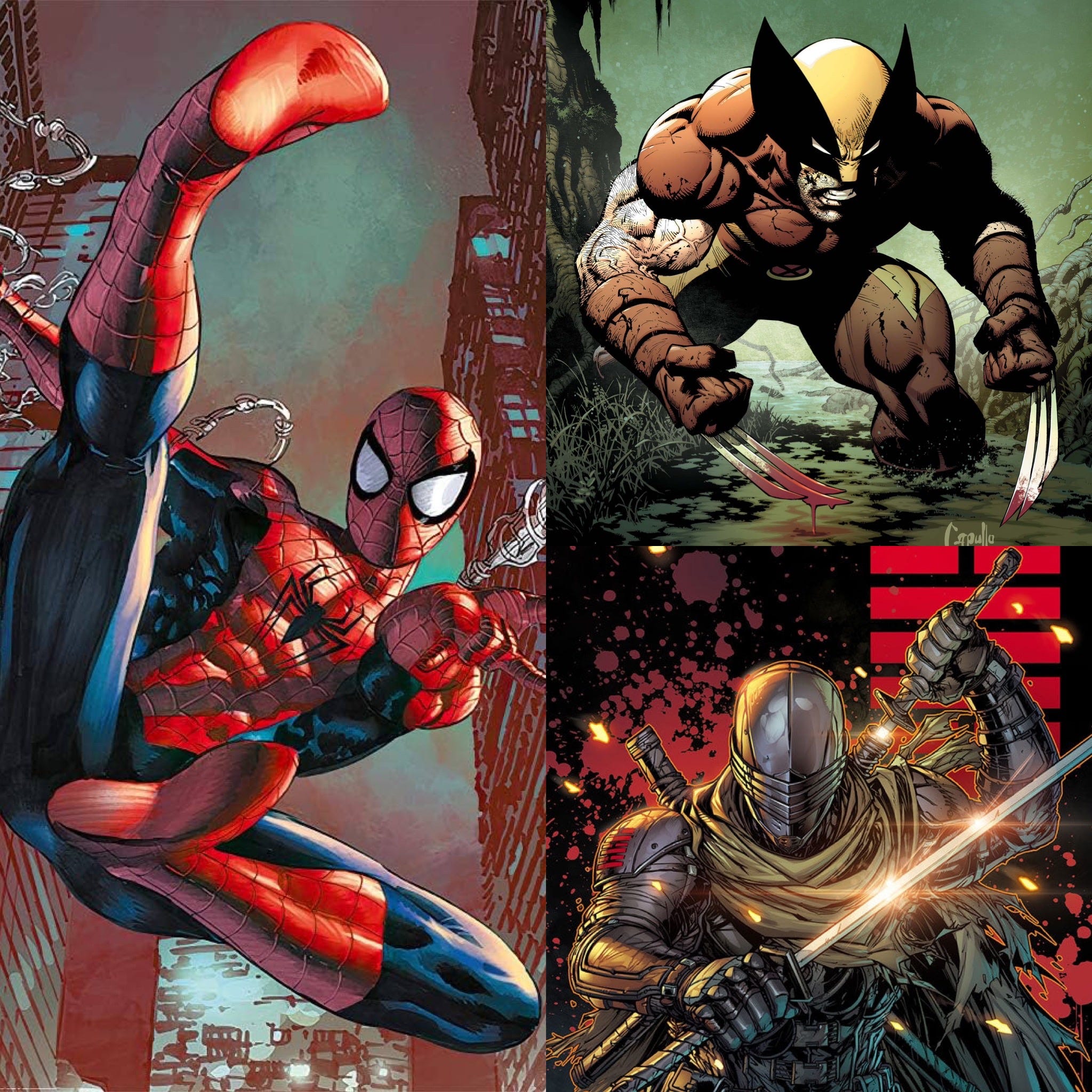
Psychotic, sarcastic, brave, but with his own code of honor, Deadpool has the ability to heal from pretty much any injury, so much so, that he is even able to regrow cut-off body parts, which… happens. This also possibly makes him immortal. He also has the ability to break the 4th wall, and will often directly address the audience, and seems to be completely aware not just of his status as a comic book character, but of unrelated pop culture in our world.
He’s known as the “Merc with a mouth,” because of the way he is constantly talking shit, both when he's beating the shit out of bad guys, and also when they are beating the shit out of him.
Which also happens… a lot.
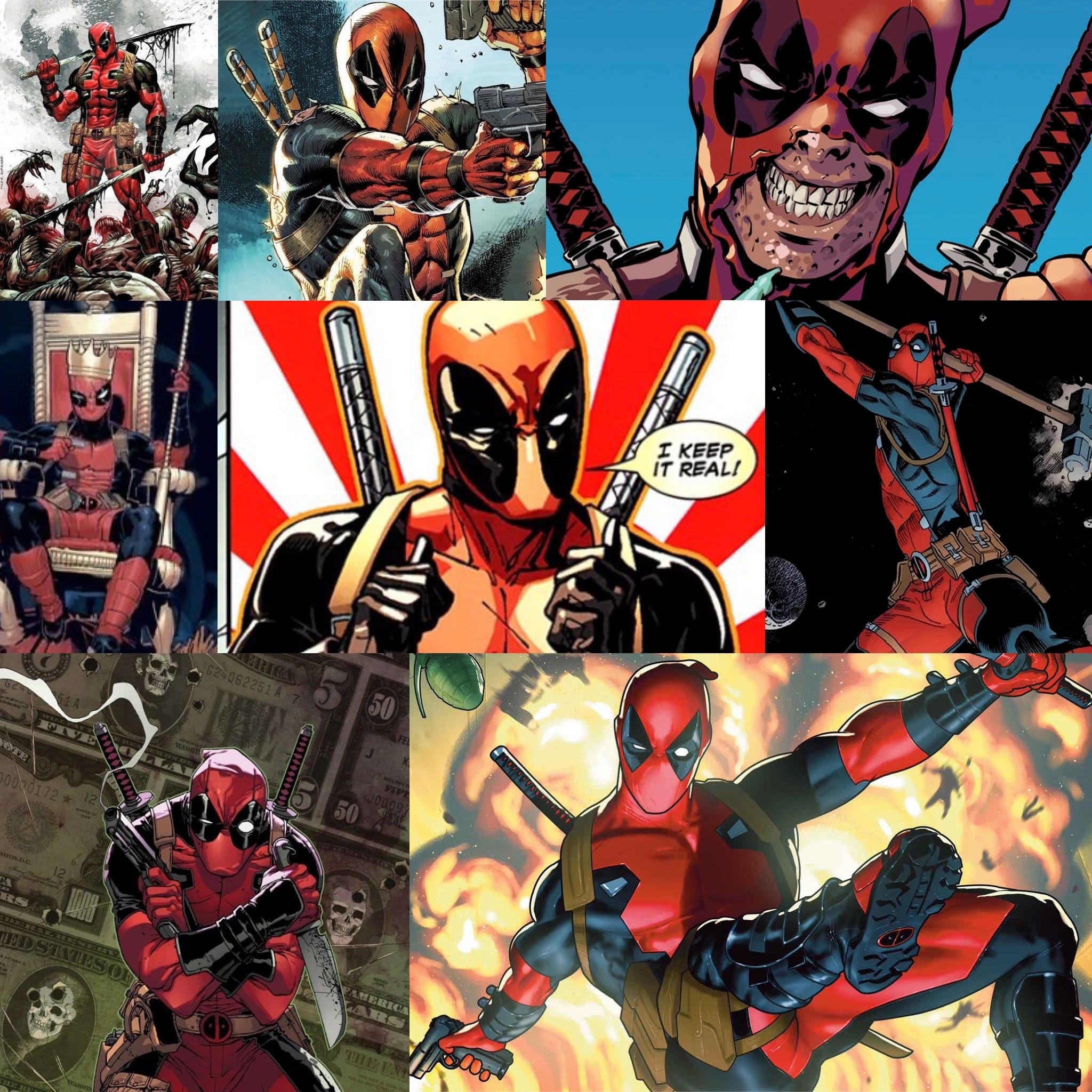
A hit from the start, like Harley Quinn, like Kamala Khan, like Mile Morales, like Wolverine, Deadpool belongs to that very rare club of new comic book characters, ones who were created long after the Golden Age of the 1940s and the Silver Age of the 1960s, who not only then went on to become A-list big-time marquee stars in comic books, but on the silver screen too.
But initially, Fox Studios was a little hesitant to release the first Deadpool movie.
At the time, the studio was reeling from the unavoidable reality that their once profitable X-film franchise was failing horribly, especially in light of the MCU’s wild success, and not a single one of those asshole studio executives were smart enough to realize that the reason the X-films were failing was because they’re all terrible fucking films, and as a result, the studio had cold feet on all new X-related projects. So it took an “unknown source” (pssst… it was Ryan Reynolds) releasing a short action sequence onto the internet that showcased a sample of what the Deadpool movie and costume would look like, which then went crazy viral, to convince Fox Studios that it was a good idea to make this film.
It was a huge hit.
And it wasn’t just a regular huge hit, as due to Fox Studio’s cold feet, they only gave the first film a meager (to Hollywood) 60 million dollar budget. The fact that Deadpool 1 and 2 each went on to make nearly eight hundred million dollars a piece worldwide means Fox Studio was then able to charge Disney a buttload of cash when they finally sold the X-franchise back to Marvel.
So now here we are… Deadpool is poised to officially enter the MCU and appear alongside all our superhero favorites, like Iron Man, Captain America, Thor, Black Panther, Ant-man, etc… and it’s going to be huge. Especially since this time, Deadpool 3 will also be starring the only good part of the now defunct Fox X-franchise, Hugh Jackman as Wolverine. So, even as movie theatres slide inexorably into extinction due to their high prices, low presentation quality, and generally filthy facilities, this film will still probably end up making a ton of money, effectively blowing up both of the current “the superhero bubble has burst” and “people aren’t seeing movies anymore” discourses that are currently dominating social media, and all because of the simple fact that never changes… people go to movies that they love, and the people love them some Deadpool.
People like me.
I mean, I’m not going to actually see it in the theatre myself, of course. I’ll wait for streaming, as COVID is not over, and only a fool would risk a long term disability on an experience that has consistantly fallen so far short of its exorbitant ticket price quite some time ago.
But still… I’m excited.
As I mentioned before, I’ve never been a fan of Liefeld’s work, and since Deadpool was his main creation, I was never a fan of that character either. This is partly due to the fact that the writers I regularly follow have never really used him. But mostly, it’s because, from the start, Deadpool was too much of a lazily designed basic bitch power fantasy, a classic example of the awful grim ‘n gritty era of comic books in the 80s and 90s where every new character was an “edgy” bad-ass named Bloodstorm or Killstorm or Bloodkill, just a sadly all too typical “MORE SWORDS!” ninja guy who was way too dependent on the kinds of unfunny catchphrases that are beloved by unfunny people, a character tailor-made for the kind of person who wears t-shirts that have Tweety bird wearing a backwards baseball hat on them.
No thank you.
But… after the formation of Image Comics, and Leifeld having to abandon Deadpool, moving the character away from the sweaty grip of the incel crowd, which led to him eventually becoming less of a tedious power fantasy under the hand of better writers, it’s been funny to watch him change from a “super ass-kicker assassin who says edgy quips in a totally bad ass way” to a “silly pansexual Bugs Bunny meets Ferris Bueller with a pair of katanas, a bunch of guns, and no real compunction about using them.” This is basically how he’s depicted in the movies.
So, yeah, I’m in for more, because I loved these movies.
Deadpool
“And yeah, technically this is a murder, but some of the best love stories start with a murder.” - Deadpool
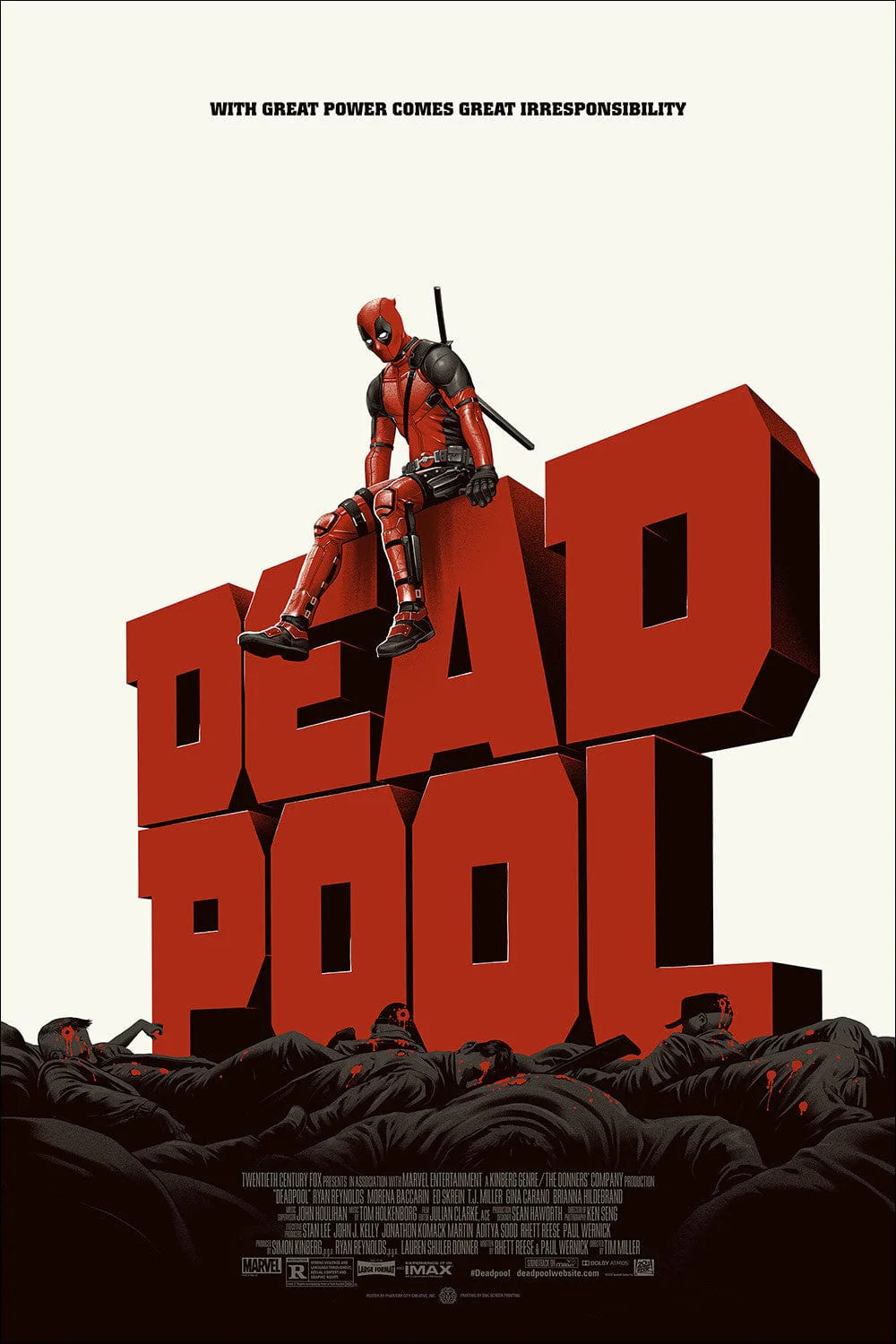
Everything is looking up for Wade Wilson, a former Special Forces operative who works as a mercenary out of a bar called Sister Maragaret’s, a bad guy who gets paid to fuck up other bad guys, when he meets the love of his life, Vanessa.
But then he finds out that he’s dying of cancer.
Desperate to beat the cancer, Wade Wilson signs up with an evil scientist, a man looking for volunteers he can subject to extreme conditions, all in an attempt to force the activation of their latent mutant genes. The experiment works, gifting Wade with incredible healing powers. However, the forced activation of his dormant mutant genes causes his cancer to go into overdrive. As a result, Wade is horribly disfigured. Unable to face Vanessa, too scared she might reject him because of his hideousness, Wade decides to hunt down the evil scientist. Moving into a crappy duplex with a blind old lady, adopting the name Deadpool, and crafting a red suit in order to hide the blood, Wade is going to kill as many bad guys as he needs to in order to find the evil scientist and cure his awful visage, so that he can reunite with his one true love. But along the way, Deadpool learns a little bit about the nature of real love, and a lot about himself too.
Overall, this film is a bloody, funny, good time romp through the tattered edges of the Fox Studios X-Men universe, showcasing much more love for the source material than the main Fox Studios X-Men movies ever did.
And all with the added bonus of the Best Colossus ever too.
Colossus
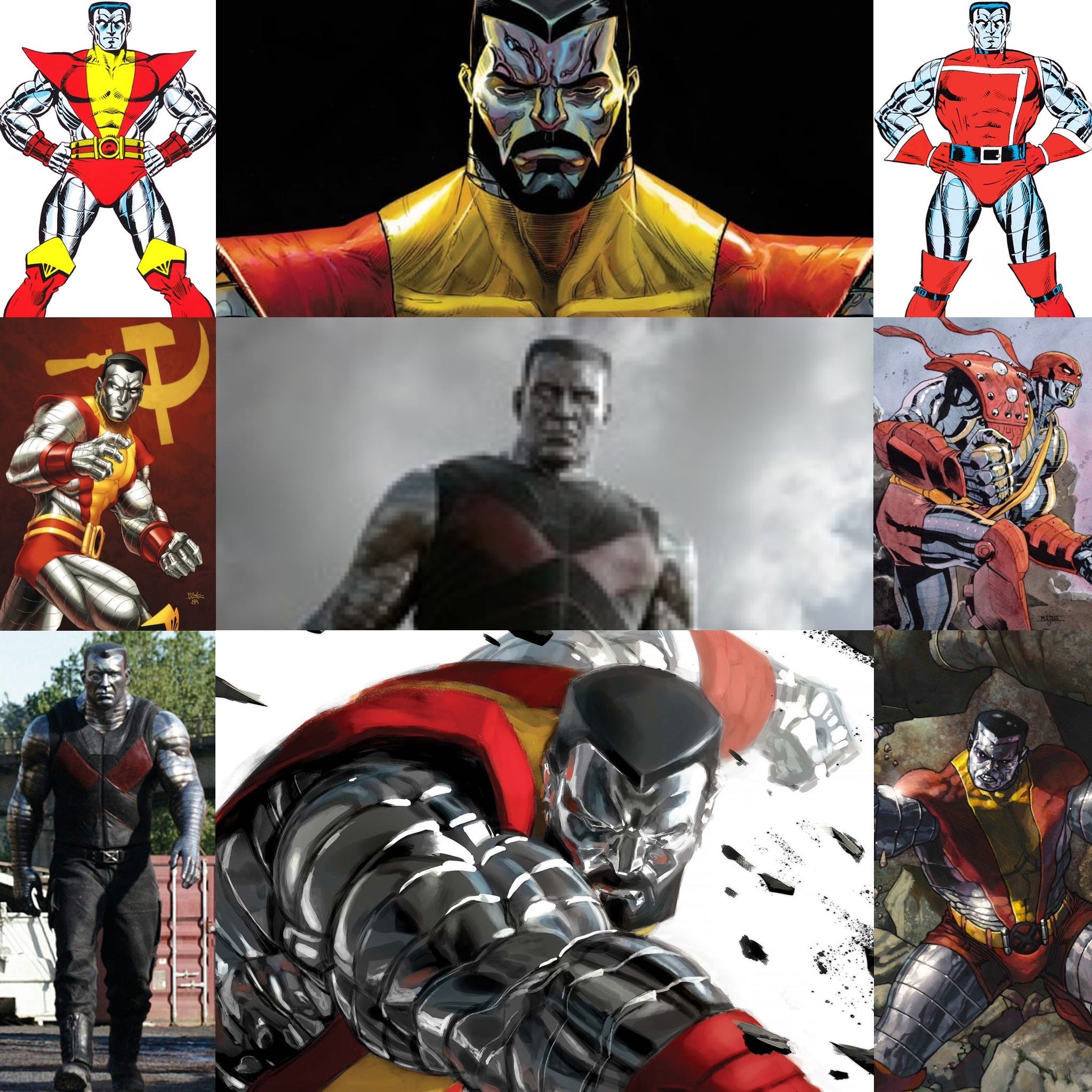
Created by writer Len Wein and artist Dave Cockrum, Colossus first appeared in Giant-Size X-Men #1 in May 1975, after the original team of X-Men were captured by the sentient island of Krakoa. Professor Xavier recruits a more internationally diverse team to rescue not just the original team, but the entire X-men franchise too, because the original team really weren’t popular with readers at the time. It was a smart move too, as the X-Men then went on to become the biggest franchise in the comic book world, second only maybe to Spider-man.
Born on a Soviet farm, Colossus is able to transform himself into a metallic form, making him one of the physically strongest characters in the Marvel Universe. Honest and virtuous, and a talented painter, he only reluctantly uses his powers in combat, as he feels that it is more his responsibility to use his abilities for the betterment of both human and mutant-kind alike.
The character of Colossus has appeared in a couple of X-films before Deadpool, but this version is by far the best one. Not only does it look right, but it’s the first time it actually felt like the character too, capturing his big Russian Teddy Bear nature, his Mother Hen outlook on life, and his incredible strength.
Negasonic Teenage Warhead
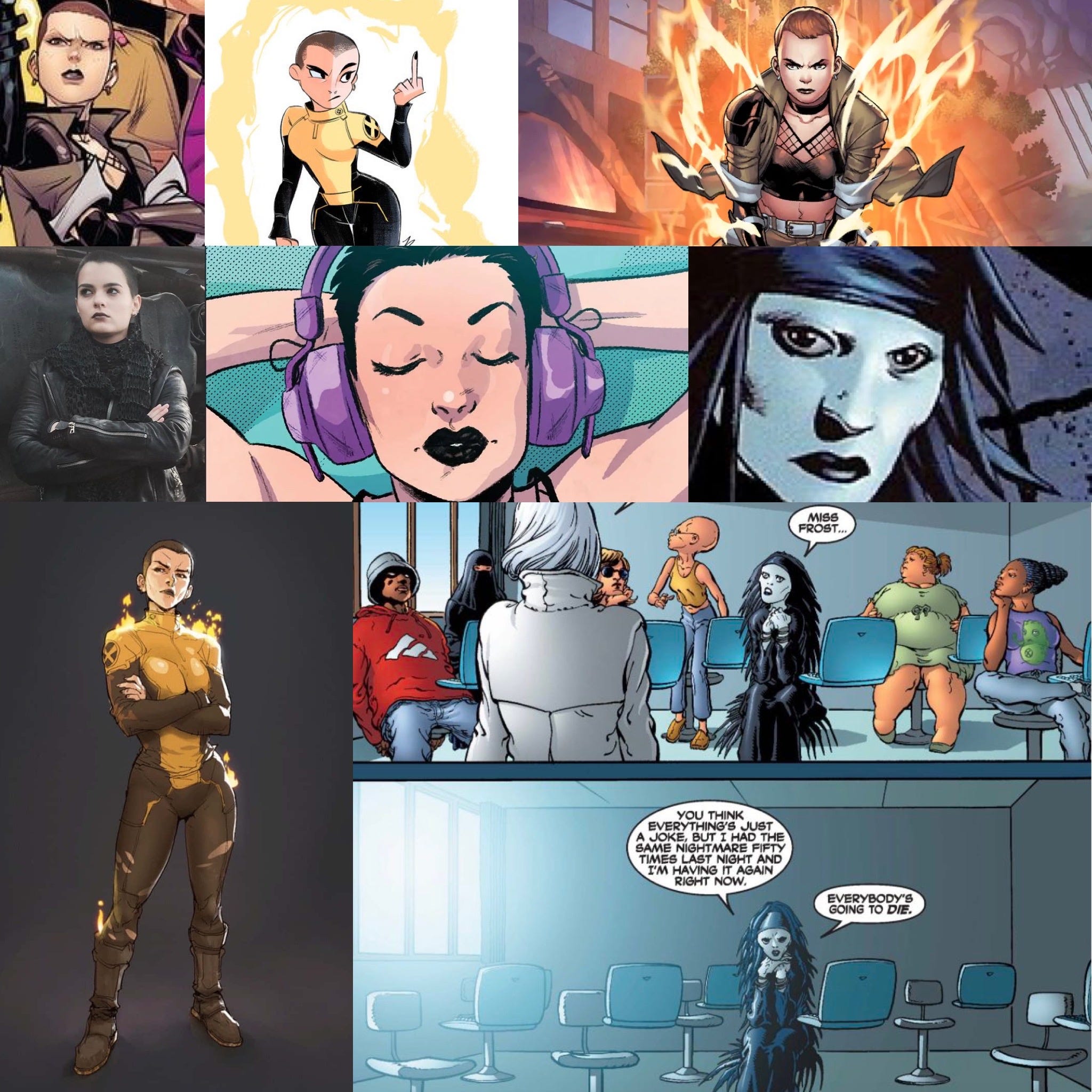
Negasonic Teenage Warhead was originally a barely noticed throwaway character whose real name was Eloise "Ellie" Phimister. Created by Grant Morrison and Frank Quitely for a handful of scenes shared with a handful of mutant kids, and named after the song "Negasonic Teenage Warhead" by Monster Magnet, she first appeared in New X-Men #115 back in 2001, and was killed soon after.
A young mutant woman from the mutant nation of Genosha, with pale skin and dark hair and dressed like a goth, Ellie announces that she’s been having a nightmare that all the people of Genosha were killed. She says this right as Cassandra Nova (the bald lady bad guy in the upcoming Deadpool and Wolverine film) launches an attack on Genosha using a classic X-Men problem… giant mutant-exterminating robots called Sentinels. This resulted in Ellie’s death, along with nearly the entire population of Genosha, which was about half the world's mutant population at the time, nearly 16 million people. It was a huge moment in Marvel Comic’s X-history, and that was Negasonic’s brief role in it.
However, after the massive success of the first Deadpool movie, and some of the typical albeit labyrinthian comic book rigamarole and hand-wavey jibber-jabber, Negasonic Teenage Warhead was alive once again, but her appearance, her powers, and her fuck you attitude were altered to fall more in line with how she appears in these films.

Similar to how Robert Downey Jr. forever cemented in the public’s mind who the character of Tony Stark and Iron Man are, and always will be, Deadpool was basically made for Ryan Reynolds and his particular idiom.
Here, Reynolds gets to do his little profane pitter-patter shtick to his heart’s content, and it works, not just because it’s entertaining, and clearly done with a huge love of the source material, but because, as I mentioned, the character has long been known as “the Merc with the mouth.” He’s supposed to be annoying… and he is. Additionally, the costume is one of the best live-action adaptations of a superhero costume ever put on screen. It’s fantastic work. All this adds up to an overall spot-on rendition of the character. I’m not saying it’s “Oscar worthy” or anything crazy like that, just that this is exactly who Deadpool is supposed to be. Plus, the film also stars the lovely Morena Baccarin as Vanessa, and it’s always a treat to see her.
So that’s all pretty well done, and I appreciate that.
There are downsides, sure. For instance, the film also stars TJ Miller, who sucks. Even worse, Gina Carano is in the film too. Both of these assholes were always cheap hires, but this was before all their shit came out, so… it is what it is. Can’t win them all.
Also, yes, there’s a lot of dick jokes in this film… a lot of dick jokes. And dick joke adjacent jokes. Yeah, there’s a lot of sophmoric shit, it’s true.
But in this film’s defense, it’s not meant to be wine, it’s meant to be Kool-Aid.
Beyond that, Deadpool also has a nice little, and best of all, sincere message that, no matter what you may look like on the outside, everyone is worthy of love, and that it’s what’s inside that counts, and that’s really great. Yes, it’s a message buried under a massive pile of blood and body parts and dick and fart jokes, but like the song says… just a spoonful of sugar makes the medicine go down in the most delightful way.
Heh… go down.
Deadpool 2
“Believe it or not, Deadpool 2 is a family film, and every good family film starts with a vicious murder.” - Deadpool
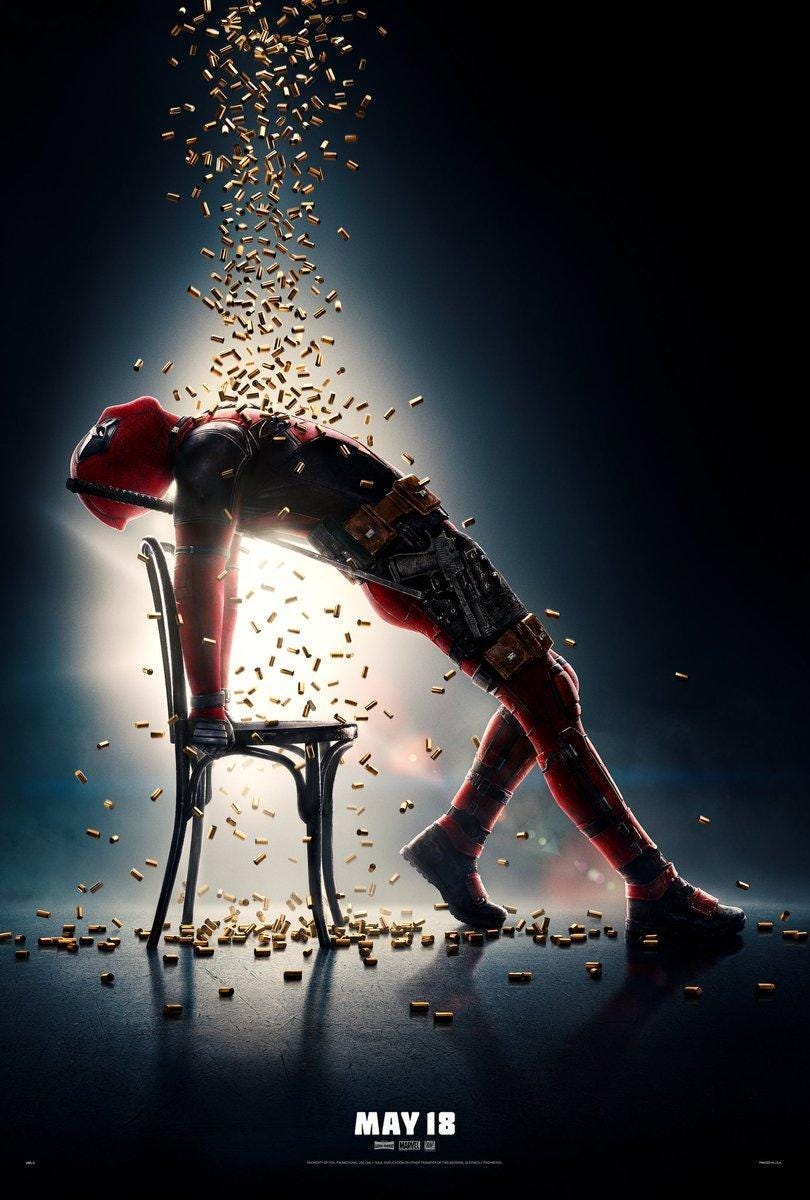
All out of love and looking to die, Wade Wilson, the mercenary assassin known as Deadpool, accidentally brought some of his killing-for-hire work home, resulting in Vanessa’s death. But instead of dying, Wade Wilson meets Russell, an angry teenage mutant in which he sees a kinship. But when Russell becomes the target of Cable, a super-soldier from the future, Deadpool is back to his old hijinks. Soon realizing that he’s going to need help if he wants to save Russell from Cable, Deadpool joins forces with some old and new friends, all in an attempt to stop a dark future from happening, and to maybe change his own terrible past too.
Woe to the multiverse…
Cable
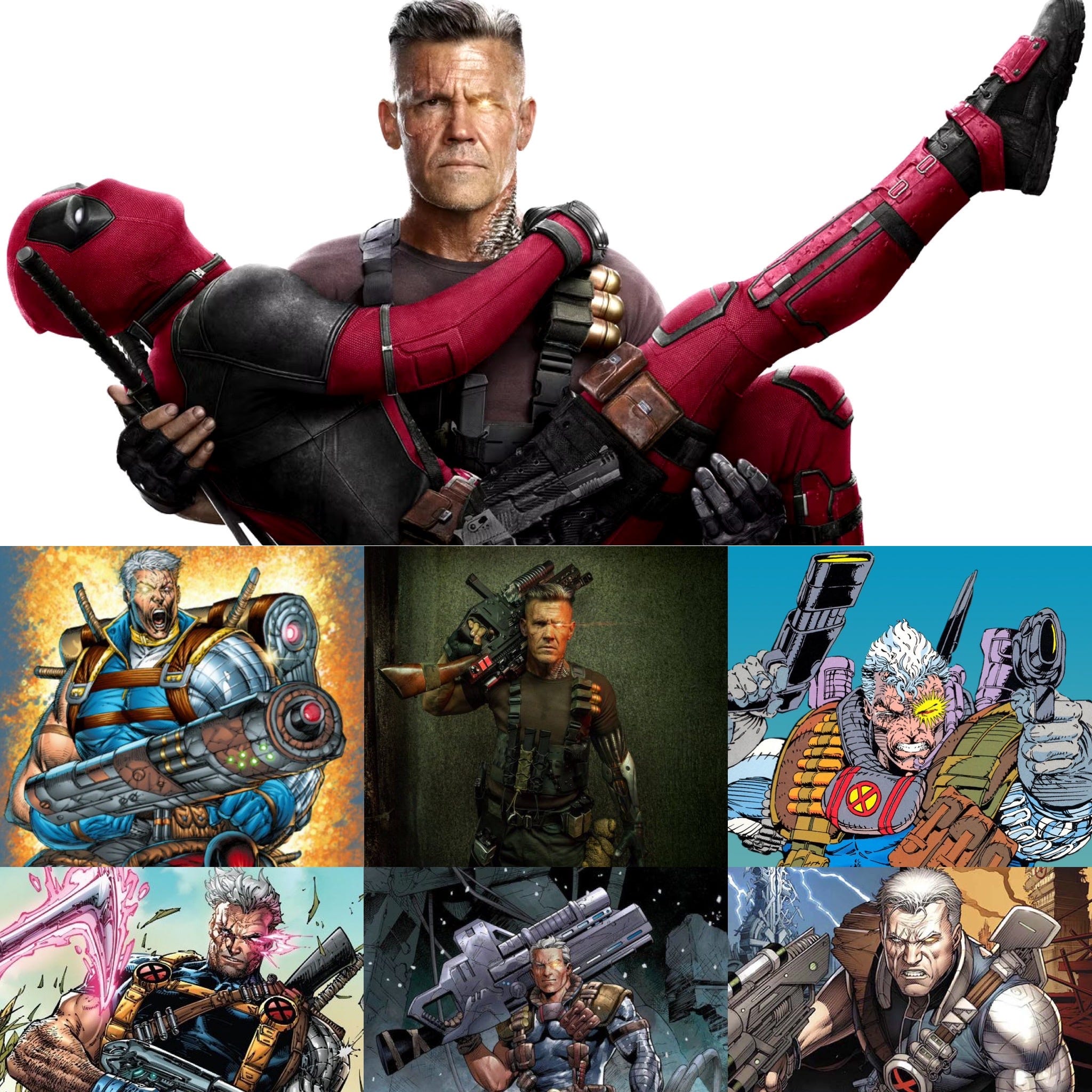
Alongside Deadpool, Cable is maybe the best example of a “Liefeld character.”
He is the “giant guns and too many pouches” guy, and maybe one of the first big characters to do the cybernetic arm thing in comics (besides Misty Knight, of course, but it’s fair to say that Cable is bigger than she is). He is basically responsbile for a whole god damn subgenre of dumb-looking characters that can all pretty much be traced right to him.
This guy was a god damn taste-maker in comics, and I’ve never understood why.
Anyway, Cable, his real name being Nathan Christopher Charles Summers, technically first appeared as the newborn infant Nathan Summers in Uncanny X-Men #201 in1986 by writer Chris Claremont and penciler Rick Leonardi. He first appeared as Cable, the super-soldier from the future, in The New Mutants #87 in 1990 created by writer Louise Simonson and artist/co-writer Rob Liefeld. Originally, Cable's origin was undecided and he was assumed to be a separate character, but it was later decided that, due to being a time traveler, he was actually an older version of the baby Nathan.
Also as a result of being a time traveler, Cable is one of the more twisted-up characters as far as his past and family connections goes, which is saying something in the X-Men universe. He is the son of the X-Men member Cyclops (Scott Summers) and Scott’s first wife Madelyne Pryor, who is a clone of Jean Grey, Scott’s long time girlfriend, who was believed to be dead at the time, but was actually the host of the cosmic being known as the Phoenix Force, the nexus of all psionic energy of the past, present, and future in all realities of the multiverse, guardian of both Creation, and of the dangerously powerful M'Kraan Crystal. Cable is also the “half-brother” of Rachel Summers, the daughter of Scott and Jean Grey from a dark future that may or may not exist anymore, and the “half-brother” of Nate Grey, a version of him from an alternate dystopian timeline. He is also the genetic template used to create the mutant terrorist known as Stryfe, but I only bring this up just to add to the general confusion. Cable is also the adoptive father of Hope Summers, the messianic first mutant baby, born after mutant-kind was nearly wiped out, after a time-traveling Jean Grey impregnated her mother using the power of the Phoenix Force. Finally, I think, there’s also a younger time-displaced version of Cable running around too, and he is called Kid Cable. This is all important shit to know.
Just kidding, it’s absolute nonsense.
Anyway, when Nathan was born in the present-day, he was infected with a deadly “techno-organic” virus, and was sent into a possible future timeline where he could be treated. A powerful telekinetic, Cable was eventually able to contain the virus, and using all his power, force it into molding into his cybernetic arm, although this means he is basically unable to use his powers for anything else. So, in this dark future world, Nathan was forged into the warrior Cable, becoming the sworn enemy of the villain Apocalypse. Vowing to stop Apocalypse’s future reign, he now travels through time, hoping to change the future, which is how he ended up in the present-day era. But at this point, thirty-some years after his creation, he’s mostly just a “big gun and too many pouches” guy, a refugee from one of the myriad dark and terrible potential futures that the X-Men spend most of their time trying to prevent.
I really like the way they pared down all that nonsense in the film, but kept the core of the characater true. Great stuff.
Domino
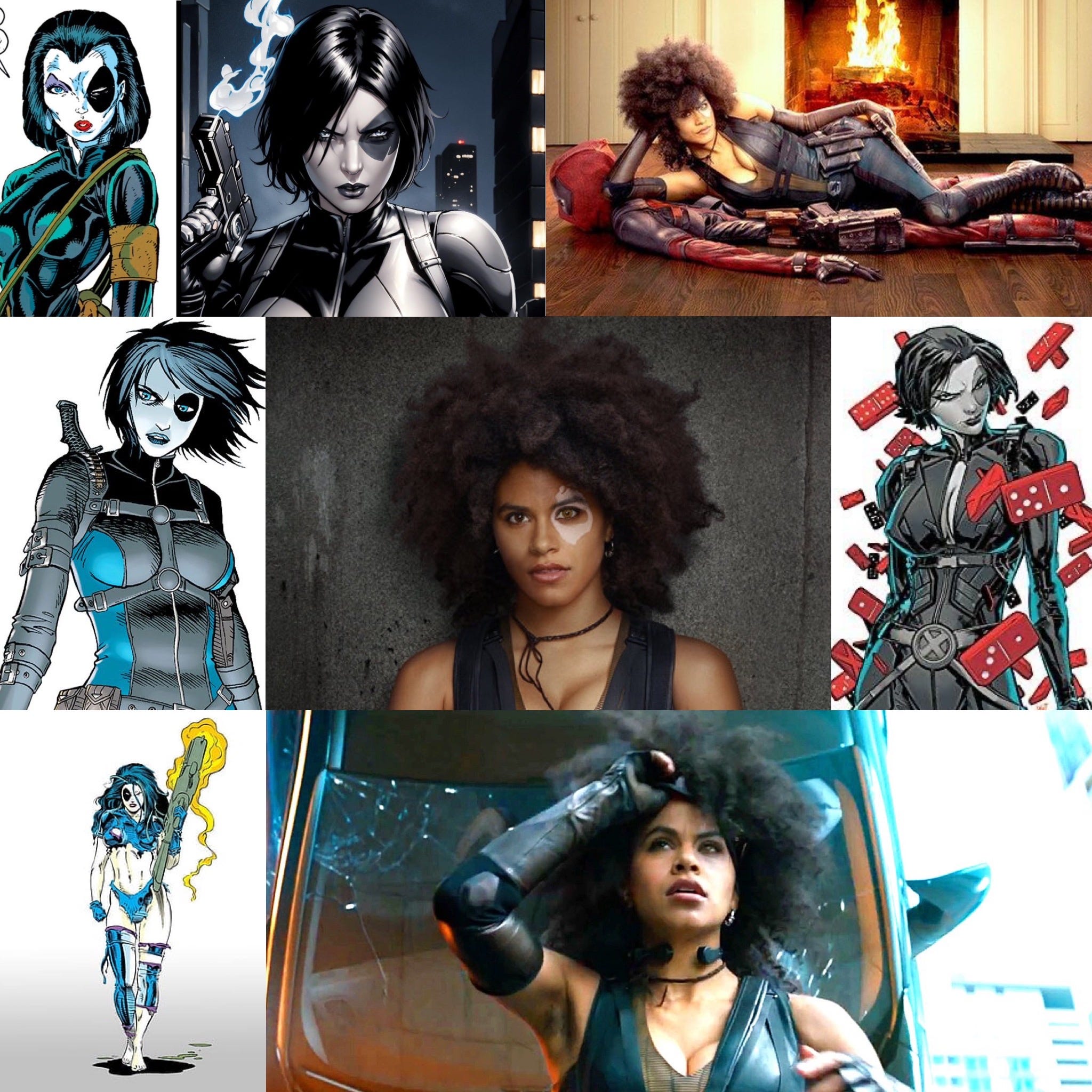
Domino (Neena Thurman) is best known as a member of the mutant team X-Force. Created by writer Fabian Nicieza and artist/co-writer Rob Liefeld, Domino made her first appearance in X-Force #8 in 1992 as an original member of the Wild Pack team led by the mutant Cable. In the comics, she is the result of a top-secret government breeding program that was intended to develop the perfect weapon, and in addition to her exceptional marksmanship and hand-to-hand combat skills, Domino possesses probability-altering powers.
Basically, her superpower is that she’s lucky.
Domino is also one of those characters whose comic book history is ridiculously horny. Ridiculously horny. The big butt to small waist to big boob ratio is all too often way out of control, people. It’s embarrassing. But like with all characters, with the right writer, she can be pretty great.
In a nice update, in Deadpool 2, instead of being depicted as pure white with the super odd choice of a black patch tattooed over her left eye, she is a black woman with vitiligo over her left eye. Also, as a funny/sad bit of nerd history, the fact that she has hairy armpits in this movie drove a bunch of stupids nerds absolutely fucking mad. They were so upset by this. The dumb assholes.
Personally, I love this version. I don’t think she’s in Deadpool 3, but I’m still hoping we get to see more of her at some point. It’s a missed opportunity not to pair her with Yelena and the Thunderbolts in their upcoming movie, but maybe these realities just haven’t merged yet, I guess we’ll see what happens in the next movie.
X-Force
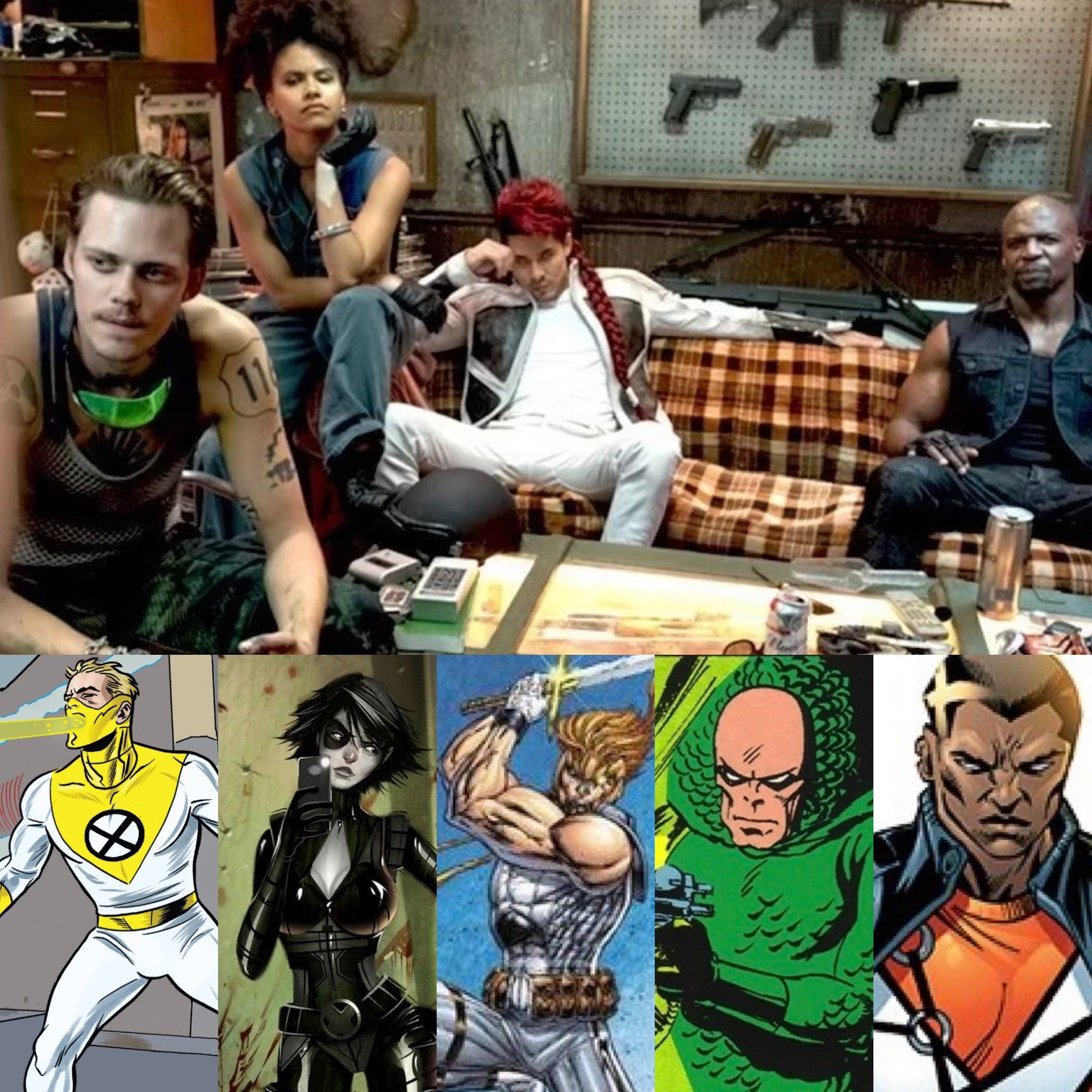
A short-lived team formed by Deadpool in this film, this version of X-Force takes part in what is my favorite sequence in the whole film.
Granted, there’s been many different versions of X-Force, and admittedly these characters were all brought together from different eras, mostly for a joke. But at the same time, this version is also clearly a tribute to the version of the team from the 90’s comics. Using them for what amounts to a single joke for the most part was not just the right choice, it was also great fun.
Loved it.
Juggernaut

The Juggernaut is a very old X-Men character. Created by writer Stan Lee and artist/co-writer Jack Kirby, he first appeared in X-Men #12 back in 1965 and has been a regular appearance, both for good and for evil, in comics ever since, having not only fought the X-Men but also characters like Spider-Man and the Hulk.
He’s what they call an Omega level threat in comics.
The Juggernaut will destroy you.
The angry stepbrother of Professor Charles Xavier, the telepathic founder of the X-Men, Cain Marko was just a regular human guy who happened to stumble across a magical gem that belongs to a deity known as Cyttorak, and who can’t relate to that, right? This gem transformed him into a virtually unstoppable powerhouse. Now, he possesses superhuman strength and durability, is practically invulnerable, and has the ability to “manipulate momentum,” which I think is technically something we can all do, but whatever… in comics, this makes him virtually unstoppable. He’s often shown bulldozing through buildings. Also, much like Magneto, Juggernaut’s weird helmet somehow inexplicably protects him from mental attacks, which is good, because otherwise he wouldn’t be a threat to the X-men at all.
Like Colossus, this isn’t the first live-action version of the Juggernaut we’ve seen on screen, but it is the hands down best live-action version of the Juggernaut. I love how they make him sound like an Italian guy from Jersey in this film. I also love how his theme song here is basically just an operatic choir, all powerfully singing “Holy! Shit balls! Oh, holy shit balls! It’s the Juggernaut! Holy! Shit balls! Oh, holy shit balls!” over and over again. Hilarious.
Everything with the Juggernaut in this film is just plain awesome, plus it leads to one of the most ridiculous/funniest/grossest moments in both Deadpool films.
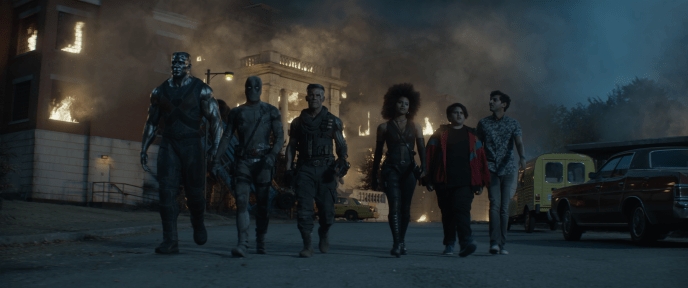
A couple of things I should mention here…
1. The armored convoy sequence is an incredible action set-piece, just top-notch.
2. It’s never not funny to me whenever Deadpool and Yukio—Negasonic Teenage Warhead’s girlfriend—say hi and bye to each. It’s just funny. I love that gag.
3. There is a legitimate complaint here about the film’s use of a particular toxic literary trope known as “Women in Refrigerators.”
Coined by comic book writer Gail Simone in 1999, the term was inspired by an issue of Green Lantern vol. 3 #54 from 1994, written by Ron Marz, where the current Green Lantern at the time, Kyle Rayner, comes home to find that a villain named Major Force has killed his girlfriend, and has stuffed her into his refrigerator.
The term describes a trend in fiction, more colloquially known as “fridging” that involves female characters facing a disproportionate amount of harm, such as death, maiming, or assault, to serve as plot devices to motivate the male characters, and goes on to note that while the violence typically experienced by male heroes often involves noble deaths or resurrections, the violence against heroines is more often used purely for shock value, and usually has permanent consequences. It’s incredibly common, and indicative of a larger issue of sexism and misogyny, not just in the comic book industry specifically, but in society and pop culture in general.
At this point, over the past quarter century, there’s been no end of exhaustive discussion about this, and all its related topics, and there will most likely continue to be more, but the simple fact of the matter is, in a male dominated industry, much like white supremacy and systemic racism in America, this is pervasive, and it’s not going away any time soon. Mostly because, the people in power, the ones who are most often guilty of using this particular trope, immediately get all defensive whenever the topic gets mentioned, their big-baby feathers immediately get all ruffled, and they cry and they stick their fingers in their ears and they throw a fit. When those people refuse to even listen, you can’t reasonably expect them to start considering what they’re doing and why, let alone to start taking steps to make things better.
Which is why you still see it so much.
And it’s not that tropes like this should always be off the table either, it’s just that maybe they shouldn’t be on the table as often. And it’s not like it’s always used for specifically malicious reasons either, but the simple fact is that most of the time, it’s used unconsciously, with zero thought at all, so maybe that person should have this pointed out to them, maybe they should be given the chance to show us what kind of person they truly are... are they going to listen, and possibly consider decisions and maybe some other narrative options moving forward, or once they have been made aware, are they just going to ignore it, and continue to perpetuate a shitty system?
Worst of all, much like white supremacy and systemic racism in America, there will always be people out there who are ready to explain away any transgressions whether they are deliberate or not. There will always be people ready to loudly excuse and defend this shit, no matter what.
I mean, I could point out here that, in Deadpool 2, hey… Vanessa survives in the end, due to time travel, and also, the film is obviously self-aware about all of this, and the James Bond-like Opening Sequence makes a really good joke about it. That’s all true, but still, “fridging” is a major part of the plot. That’s just a fact, and it is kind of shitty.
Be mad about that if you want, but think about it in the future.
Finally…
4. I never would’ve realized that “Do You Want to Build a Snowman” from Frozen uses the same tune as “Papa, can you hear me” from Yentl if it wasn’t for this movie.
That’s also a fact.
Best of all with this film, once you get past all the fun, the violence, the fucking around, and the typically ludicrous X-Men shenanigans, not to mention another massive pile of dick and fart jokes and generally sophmoric shit, you’ve got a good time action-extravaganza that is also, at least a little bit, about breaking the cycle of abuse, and the importance of found families, which is pretty cool.
AND…
As a nice little unexpected treat, due to the extended mid-credits joke sequence inadvertently teeing up the perfect way to merge the crumbling ruin of Fox Studio’s Cinematic X-verse into the Marvel Cinematic Universe mega-franchise, we are now finally seeing the X-Men enter the world of the Avengers, Dr. Strange, Spider-man, and soon enough, the Fantastic Four, all because Deadpool is about to run headlong into the Time Variance Authority, more commonly known as the TVA, from the Loki tv series. The TVA are an organization that doesn’t look too kindly on jackasses who fuck around with the time stream.
Which is what Wade Wilson has been doing, so…

I can’t wait.
In the end, for having never really been a fan of this particular era of the X-Men universe, or of most of the core characters, I was surprised by how much I enjoyed both of these films. Not just because of their wonderful inventiveness when it comes to violence, or the great running gags, or the obvious love for the source material… but by their heart too. Yep, that’s right, their heart. There’s a sincere and gooey center to these films. Underneath all the blood, the viscera, the sex, the swearing, and the dick jokes, there’s a lovely little gooey heart to these films. It’s not an overwhelming focus of the films or anything, but still… it’s definitely there, and it was pretty well done.
So, I like that.
Are these films sophmoric? Yes. Kind of. Occasionally. Often, actually. Most of the time, really. They honestly might not be your scene. That’s fine, it’s not usually mine either, but a few jokes that don’t land aside, these films really are pure entertainment, nothing but explosions and fun, somehow capturing the wild nonsense feel of a good X-Men comic perfectly, and all while including a couple of nice little messages too.
Thumbs up.
I’m really excited to revisit this topic with you all about 45 days or so after Wolverine and Deadpool is finally released in theatres, as that’s about the time when it will hit streaming.
See you then!
